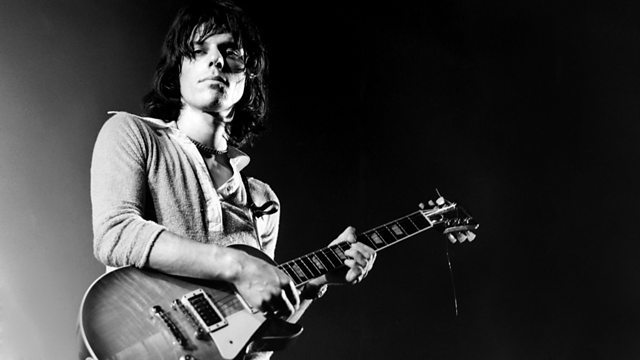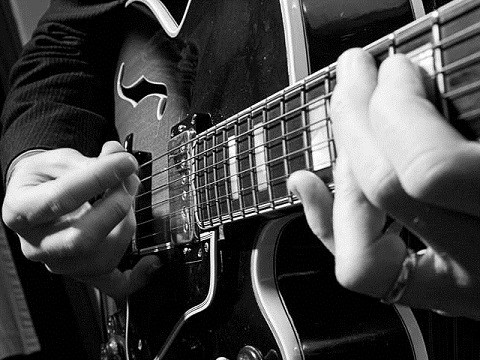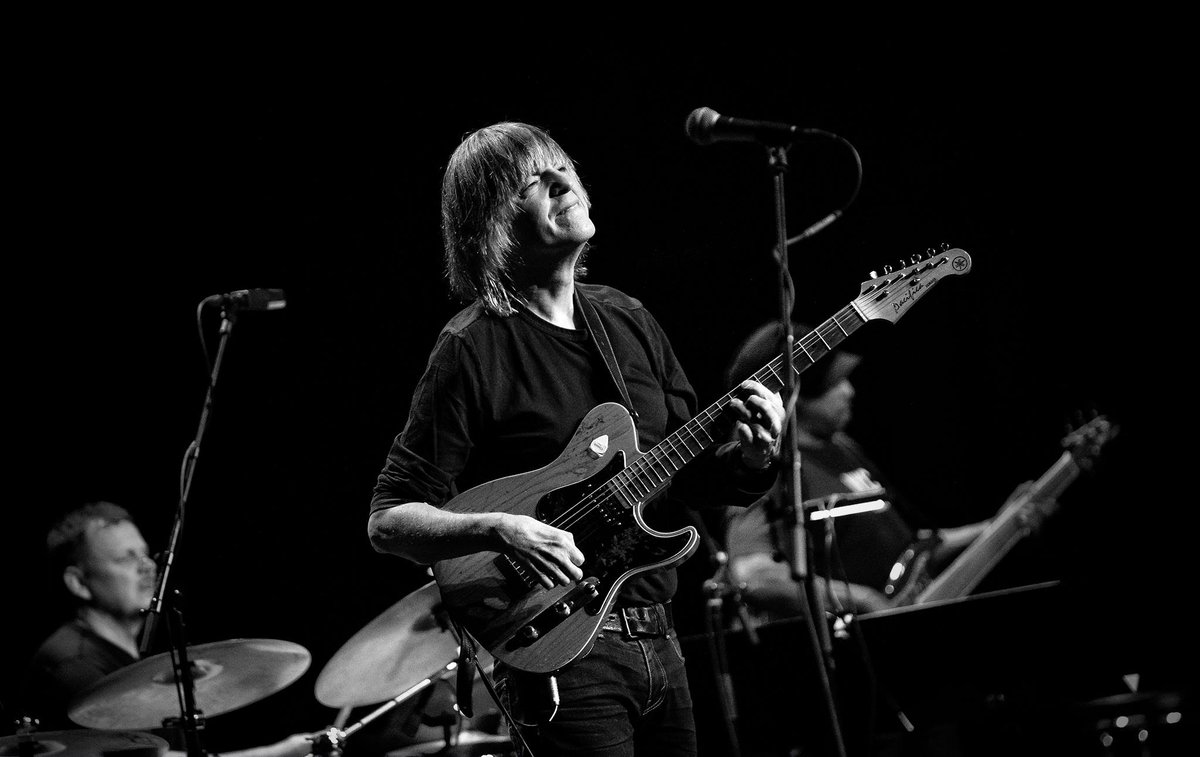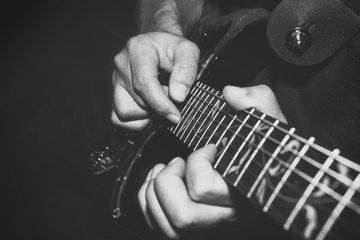Once in a while you see a guitarist perform, not necessarily a well-known one, and the consensus is that the guy, or girl, is a tasteful player. I can think of a few off the top of my head, Steve Lukather, Mark Knopfler, David Gilmour, Robben Ford, Jeff Beck etc., plus the ones I’ve seen performing in remote bars to three men and a dog. So, what is it that makes a guitarist be considered tasteful? Strangely enough this is actually one of the few things guitarists can agree on; not many would disagree with the above players being classed as tasteful, and their solos generally reflect this. When you study tasteful guitar players in detail, more often than not you’ll find the following 7 ingredients are what make up a tasteful guitar solo.
1. Melody – A tasteful guitar solo almost has to be melodic to a certain extent. Bear in mind that most of your audience won’t be musicians, unless you have the misfortune of playing in front of a bunch of guitarists and are expecting to hear a melody or two. What’s more, think about the function of a solo from a non-musician’s point of view: it’s part of the composition of the song, and anything doesn’t add to or blend in with that composition is going to sound awkward to a non-musician, much more so than to a bunch of musicians who may think you’re ‘being clever’.
2. Phrasing – Phrasing is like having a conversation with your audience and helps them understand your soloing ideas. You wouldn’t talk continuously to someone without pausing to take breather; this is pretty much the same effect as an endless barrage of notes, unless the piece really calls for it. Check out this article for tips on how to improve your phrasing.
3. Tone – All of the aforementioned players have fantastic tone. Your solo simply won’t go over well if you’re playing with a crappy tone, too much distortion or a ton of other effects. Playing too loud is also a turn-off; I always go by the drummer if there’s no sound guy, if he can hear me then I’m loud enough. If you want to work on your tone you’re better off looking at things like vibrato, and how you’re connecting physically with the guitar, rather than buying better or newer gear. You’ll notice that guitarists with great tone even sound good on toy guitars—it’s all in the fingers as they say.
4. Take the song somewhere – This is probably one of the hardest things to do on guitar as we looked at in this article a while back, but as Rick Eckhardt says, this is what you should be thinking when you solo:
You should be thinking, “What line would fit best and can I sing it?” A solo should take you somewhere. It should start where the melody left off and wrap up where the song is going next. Really, it’s a way to segue between musical sections, and an important building block in the song’s emotional structure.
Source: http://www.premierguitar.com/articles/Tips_on_Soloing
5. Play stuff people want to hear – This kind of goes hand in hand with the last point but there are certain things people want or are expecting to hear in a guitar solo. This doesn’t mean you have to play a bunch of cliché licks, but you do need to combine the above four elements and avoid unnecessary techniques (those that aren’t relevant to the style or the song) and quantities of notes.
6. Play fast but choose not to – Or only when you’re building up tension, or to create excitement. One thing I love about the players mentioned in the intro is that they can all play insanely fast but choose not to for the sake of taste.
7. Silence is golden – This goes along with phrasing in the sense that if you want what you’re playing to have a greater impact, it needs to be accompanied by silence to create tension and release. Give your audience time to think and wonder what’s coming next. If you haven’t incorporated silence into your playing yet, you’ll find it somewhat unnerving at first. Remember the relativity of time: what seems like a painfully long time when you’re soloing is actually only a matter of seconds for anyone listening.
Can You Play Fast AND be Tasteful?
I think there are very few players who can do this. Richie Kotzen is certainly one of them, and well-worth checking out if you haven’t already. The trouble is when you start playing fast, taste kind of goes out the window…
I remember when this happened to me; suddenly everything fell into place, and it felt like the previous month’s attempt to practice had actually paid off. My right-hand picking technique began to click with what my left hand was doing, and it all began to flow rather smoothly. I remembered Dave Kilminster’s wise words back in Music College, ‘If you’re doing it [playing fast] properly, it should require no more effort to play fast than to play slow’, and how right he was! It was effortless, and I basked in the glory of my own wankery. Several hours later though, I felt a looming sense of responsibility…
I tried to shrug it off, but it was no use; with great technique comes great responsibility or be condemned to the realm of 80s hair guitar forever. Shredding post-1989 requires musicality, and only those that have a distinct musical voice, along with ridiculous chops, actually make a living from the guitar version of extreme sports. What was slightly more worrying though was the fact that I didn’t really have anything to play. Sure I could burn up and down scales to my heart’s content, but that will never cut it unless the average age of your audience is 13, and/or easily impressed.
Listen First
Listening is a powerful thing, it invokes emotions and therefore its effects run deeper if you’re a musician. So deep in fact that it’s probably the single biggest (and unmeasurable) influence on your playing, hence, be careful what you listen to… Bearing this in mind I concentrated my listening on players like Richie Kotzen, Allan Holdsworth, Vernon Reid, Tosin Abasi, Eric Johnson, sparing amounts of John Petrucci and a few others; players that do fall under the shred umbrella (not meaning to cheapen their work by calling them shredders) but have a certain musicality i.e. this is fast playing with finesse, or some kind of objective other than speed. I think this is the key; speed shouldn’t be the objective, only the vehicle that allows you to express yourself on another level. Make sure it’s the notes that are being emphasized, and not the technique.



